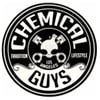Foam Pad Cleaning Brush
Features:
- Clean pads cut better and last longer
- Easily scrubs residue and dirt all foam, microfiber, and wool polishing pads
- Clean and condition any buffing and polishing pad
- Made with durable synthetic bristles
- Rugged plastic handle lasts for years of comfortable use
- Ergonomic design easily used on or off machine
- Saves time and money while cleaning or replacing polishing pads
How To Use
- Carefully remove the polishing pad from the hook and loop backing plate.
- Spray 1-3 spritzes of clean water and Chemical Guys Polishing Pad Cleaner, then scrub vigorously with the Polishing Pad Cleaning Brush.
- Rinse the pad with running water, then gently wring out excess water and loosened debris.
- Let the pad air dry, or give it a couple quick spins on your machine polisher to knock out any remaining water before returning to work.
- Make sure to spin the pad in a safe direction that can get wet. Spray 1-3 spritzes of clean water and Chemical Guys Polishing Pad Cleaner on the pad.
- Turn the pad in a safe direction (like inside an empty bucket.)
- Hold the Polishing Pad Cleaning Brush against the pad, then turn the machine on speed setting 2 - 4.
- Scrub until clean.
Motor Vehicles
WARNING: Motor vehicles contain fuel, oils and fluids, battery posts, terminals and related accessories which contain lead and lead compounds and other chemicals known to the State of California to cause cancer, birth defects and other reproductive harm. These chemicals are found in vehicles, vehicle parts and accessories, both new and as replacements. When being serviced, these vehicles generate used oil, waste fluids, grease, fumes and particulates, all known to the State of California to cause cancer, birth defects, and reproductive harm.
Tools:
WARNING: Some dust created by power sanding, sawing, grinding, drilling, and other construction activities contains chemicals known to the State of California to cause cancer and birth defects or other reproductive harm. Some examples of these chemicals are: lead from lead-based paints, crystalline silica from bricks and cement and other masonry products, and arsenic and chromium from chemically treated lumber. Your risk from exposure to these chemicals varies, depending on how often you do this type of work. To reduce your exposure, work in a well-ventilated area and with approved safety equipment, such as dust masks that are specially designed to filter out microscopic particles.
Electrical Cords
WARNING: The wires of these products contain chemicals known to the State of California to cause cancer and birth defects or other reproductive harm. Wash hands after handling.



